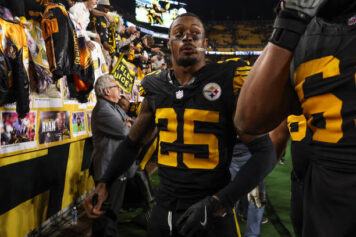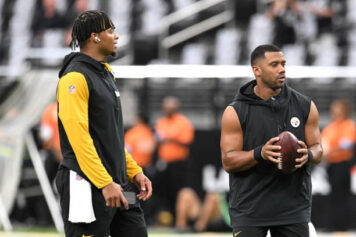There’s not much the Chicago Bears can rely on these days. The vertical passing attack rolled with Jay Cutler’s the defense has been a sieve and Marc Trestman’s mentorship of Cutler has been an abject failure. Worst of all, Matt Forte hasn’t even eclipsed 1,000 rushing yards yet.
And yet, he’s been one of the few reliable figures. At the age of 29, Forte’s workload between the tackles has decreased. However, his overall production hasn’t waned as his 88 receptions thus far leads all running backs in 2014.
With 13 more catches over the final two weeks, he’d match Larry Centers’ single-season record for running back catches.
Pittburgh’s Le’veon Bell is beginning to embark on the type of dual-threat career Forte has churned out for the past seven seasons.
In 14 games, Bell is second among running backs to Forte in receptions (76) and first in receiving yardage (765 to Forte's 745).
Bell and Forte’s receptions are essentially an extension of their respective team's rushing attacks and lessen the pounding on their workhorse starter's bodies.
DeMarco Murray is toting the rock between the tackles more than any other back in the league, but Bell is trailing by only 40 yards in total yards from scrimmage despite receiving 89 fewer carries. More importantly, he's healthier than Murray.
Teams ave phased out fullbacks and begun throwing to spryer running backs more often, but no matter what the inflated numbers say, Marshall Faulk remains the gold standard of all-purpose backs.
The dynamic, versatile ability of the typical, contact-seeking running back who can run a route from the backfield and take advantage of one-on-one coverage with a safety or linebacker who’s been dragged out of his comfort zone, is an additional hair thinner for defensive coordinators.
Yet, to this day, Faulk and 49ers great Roger Craig, remain the only two backs to surpass 1,000 yards receiving and 1,000 yards rushing in a single season. You can also count former Baltimore Colt Lenny Moore among one of the great hybrid running back/receivers in league annals.
Bell and Forte pace the league, but behind them the only three halfbacks with more than 400 receiving yards are third down backs with minimal route running responsibilities such as Redskins back Roy Helu Jr. (436 yards), Patriots platoon private Shane Vereen (421 yards) and Bills elder Fred Johnson(404 yards).
That trio also averages fewer than 40 rushing yards per night.
Starter Eddy Lacy has gained 396 yards and Murray is quietly lurking with 395 receiving—although hand surgery may limit how often Romo throws to him out of the backfield.
However, Murray is the most banged up as a result of his excessive pinballing between linebackers and defensive lineman grappling between the trenches.
All-purpose backs get spread out and as a result their lower usage in the grinder saves mileage on the odometer of finely-tuned running backs.
Even as mobile quarterbacks have proliferated, defensive lineman get more athletic and lithe, diminutive cornerbacks get taller, the Faulk variety of halfbacks who can haul in a deep bomb remain scarce.
C.J. Spiller was supposed to be the next great all-purpose back to hit pro turf and takeoff like a young Faulk, however, injuries and a proclivity for indecisive East-West has prevented him from unlocking his full potential.
Reggie Bush has been the closest parallel to a No. 1 back, but his 1,006 rushing yards in 2013 was only the second time he’s breached the 1000 yard mark and at his current career trajectory, it will probably be the last.
Looking ahead, Oregon’ 1,000 yard tailback-turned slot receiver Byron Marshall could fit the mold. He showed he can handle the grind of being a workhorse during his sophomore campaign and has impressed as a full-time receiver/part-time tailback this season catching 61 passes for 814 yards and nearly eight yards per rush. Now all he has to do is prove he can walk and chew gum at the same time.
At 5-10, 205 he possesses much better measurables than the Titans 5-8, 170 pound hybrid Dexter McCluster or the Green Smurf Darren Sproles.
Elite runners such as the shifty duo of Jamaal Charles in Kansas City and Philly's Lesean McCoy are regularly deployed on shallow routes, but there are levels to this. The numbers look comparable to Marshall in his prime, but don’t be fooled. Like Kobe passing MJ on the career scoring list, the Marshall Faux of today are beneficiaries of the passing offense's evolution.
That's not meant to be a knock against this generation. Imitation is a form of flattery and some of them do it well. However, no matter what records Forte and Bell fall, there’s only been one Marshall Faulk–so far.



